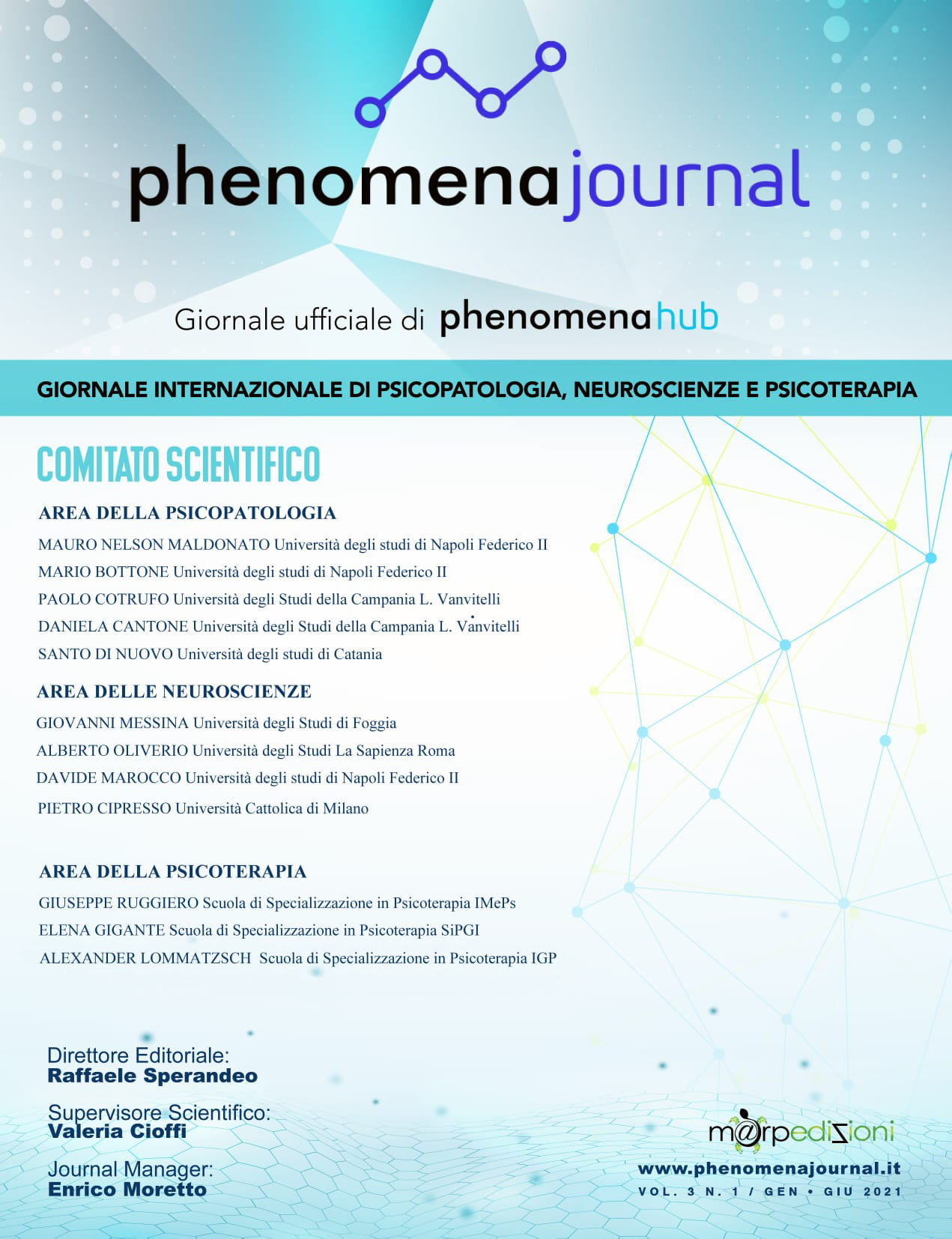Published 2021-03-20
Keywords
- Experience,
- Awareness,
- Responsibility
How to Cite
Abstract
"Being in experience is being in what is, who is, who feels. From here you are builders of your own existence."
This opinion article arises from the dimension of being a psychotherapist, first in training and subsequently in clinical operation, from whose experience it is essential to be a psychotherapist AWARE and RESPONSIBLE for himself, for what happens and for the relationship with the patient.
The three main axes of Gestalt: Experience, Awareness and Responsibility are concretized in clinical practice with patients, in every interview, in every phase of the therapeutic process and in the development of the entire treatment that evolves into the "co-built" creative act what a cure. We are psychotherapists trained in theory and technique, aware of their emotional, relational, mental functioning, to help the patient in his integration process. Scientific research shows that 15% of the outcome of psychotherapy is due to techniques, and 30% to the intrinsic factors of the relationship between therapist and patient.
Hence the therapeutic dimension of the relationship as a true healing experience. In this sense, psychotherapy goes beyond the patient's inner work and the strategic activity of the psychotherapist, and the psychotherapist with the Being present to himself, to his own acts, to his words, acts as an alterity facilitating that experience of contact which the patient needs to overcome repetition, the blockage as closure to contact represented by the symptom. The psychotherapist is more responsible for the relationship than for the patient.
References
- Greenberg M. ed altri (2000), Manuale di psicoterapia Integrata, ed. Sovera, Milano.
- Clarkson P. (1997), La relazione psicoterapeutica integrata, ed. Sovera, Roma
- Ariano G. (2013), La relazione curante. La psicoterapia della Gestalt, ed. Sipintegrazioni, Napoli.
- Iacoboni M. (2008), “I neuroni specchio. Come capiamo ciò che fanno gli altri.”, ed. Bollati Boringhieri, Torino.
- Daniel J. Siegel (1999), La mente relazionale, Raffaello Cortina Editore
- Bottaccioli F, Bottaccioli AG (2017), Psiconeuroendocrinoimmunologia e Scienza della cura integrata. Il Manuale, Edra, Milano
- Greenberg M., Paivio S., (2000), Lavorare con le emozioni in psicoterapia integrata, ed. Sovera, Roma.
- Rogers C. (1970), La terapia centrata sul cliente, ed. Martinelli, Firenze.
- Bonvissuto P., Gigante E., Sperandeo R. Il modello della Gestalt Integrata, ed. Si.P.G.I.
- Polster E. (2007), Psicoterapia del quotidiano, ed. Erikson, Gardolo (TN).
- Giusti E. e Rosa V., (2002), Psicoterapie della Gestalt, Integrazione dell’Evoluzione Pluralistica, edizioni scientifiche, A.S.P.I.C., Roma.
- Ginger S. (1990), La Gestalt. La terapia del contatto emotivo, ed. Mediterranee, Roma.
- Naranjo C. (2009), “Per una Gestalt viva”, ed. Astrolabio, Roma.
- Menditto M. (2011), “Psicoterapia della Gestalt contemporanea”, ed. Franco Angeli, Milano.
- Polster E., Polster M. (1986), Terapia della Gestalt Integrata. Profili di teoria e pratica, ed. Giuffrè, Milano.
- Ferrara A., Spagnuolo Lobb M. (2008), Le voci della Gestalt, ed. Franco Angeli, Milano.
- Polster E. (2007), Psicoterapia del quotidiano, ed. Erikson, Gardolo (TN).
- Giusti E., Montanari C., Iannazzo A. (2000), Psicoterapie Integrate, ed. Masson, Milano.
- Patrick Casement, (1989), Apprendere dal paziente, ed. Raffaello Cortina, Milano.
- Zinker J. (2002), Processi creativi in psicoterapia della Gestalt, ed. Franco Angeli, Milano.

